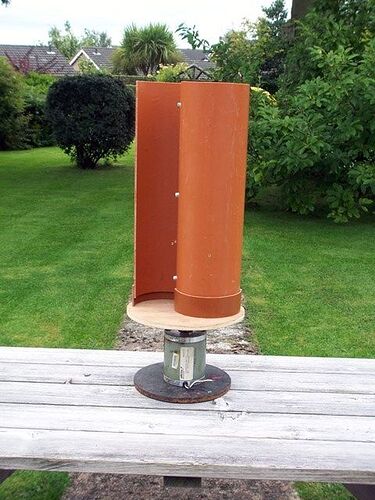There are many discussions leading to Betz’s law and its validity.
In first what is Betz’s law? Betz’s law is not a rule, but is a physical law. This law states there is a limit of kinetic energy of wind an idealized turbine can capture through an idealized disk-shaped area section. This limit is 16/27.
Theoretically Betz’s limit applies to all sorts of wind turbines.
But practically current HAWT are closer to the idealized turbine because their rotor has roughly two dimensions, leading to a swept area roughly corresponding to the idealized disk-shaped area section, so in a configuration preventing any renewal of the wind.
If the turbine works in three dimensions, like VAWT, some renewal of the wind occurs. Said renewal of the wind could be neglected for small turbines but not for very large turbines which become far from the idealized turbine within an idealized disk-shaped area section. This has nothing to do with the eternal “beat the Betz limit” generally leading to so-called “breakthrough” but in reality fancy concepts.
Other turbines are expected to work in three dimensions, comprising AWES. By considering the frontal airspace of wind which is swept, Betz’s law could be used but only as a first approximation.
This leads to Dabiri’s work on https://nawindpower.com/stanford-researchers-boost-wind-productivity-with-wake-steering. He states that "we need […] to start thinking about the farm as a whole, and not just as the sum of its parts”, indicating that a single wind turbine facing the wind is more efficient in regard to Betz’s law, but several turbines facing the wind lead to more important losses due to the wake effect. Resulting when the turbines are “slightly away from oncoming wind” the whole wind-farm becomes more efficient.
In Dabiri’s work, but also for AWES or other large devices working in three dimensions, the volume of air is considered, implying the renewal of the wind and the wake effect within said volume. So this could lead to find a rule, perhaps a law, concerning a limit of kinetic energy of wind that could be captured within said volume of air.
